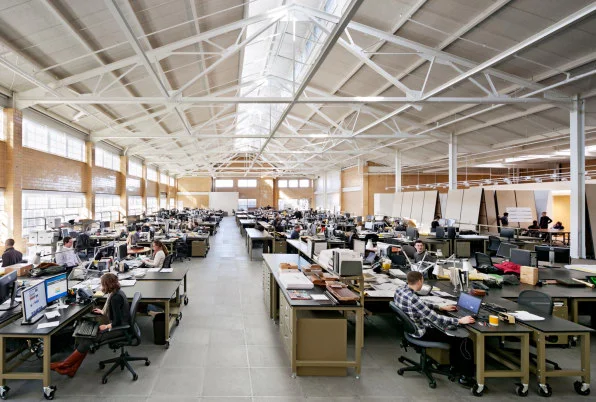[Image: courtesy Kieran Timberlake]
In the summer of 2015, when the architecture studio Kieran Timberlakemoved into its new office space in Philadelphia, the firm became its own science experiment.
Kieran Timberlake had renovated a former beer bottling plant, Ortlieb’s Bottling House, relying on a mix of passive strategies to cool the historic building. During the first months in the space, the architects wanted to understand how their plans were working in real time–so they installed their own network of 300 sensors inside the two-story building to record quantitative data about the temperature and other metrics. Kieran Timberlake also developed its own app to survey the occupants themselves about how they were feeling on a daily basis. Was it too hot? Too cool? Too bright? Too loud? The app recorded tens of thousands of responses from the firm’s employees, which the app analyzed to create a visual model of their feelings across the building.
They called the app Roast–a wink at Philly’s notoriously sticky summers.
“Everyone knew we were running this experiment, so they suddenly had a place to register how they felt in the space,” remembers Kieran Timberlake partner Billie Faircloth. “And then, because of Roast’s ability to map where people are in a space, we began to get this spatially explicit map of how people feel across the office.”
[Image: courtesy Kieran Timberlake]
Roast greets users with empathy: Need to vent? Roast is listening. It’s the voice of the cubicle mate who is here for your complaints about your coworker’s annoying phone voice or lunch smells. “We had a lot of fun with the writing,” says Faircloth. “We imagine having some empathy with those who might really want to vent.”
But beyond providing catharsis for users, Roast’s data proved incredibly useful to the architects, too. A look at all that feedback revealed that the firm needed to install a much smaller mechanical system than they would have expected based on prescribed industry standards. “Obviously there are cost benefits, but it’s also just cheaper to run–and it allows people to be more comfortable because we’re not overcooling the space,” says Kieran Timberlake principal Roderick Bates.
The building was awarded the AIA’s new Top Ten Plus Award this month, an annual honor that celebrates a building with “exceptional” performance data. By studying not just the temperature or humidity of the space, but the feelings of every single person inside of it, they had produced a better piece of design.



